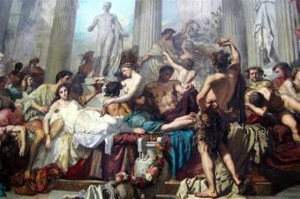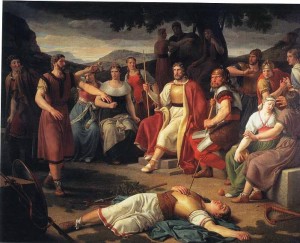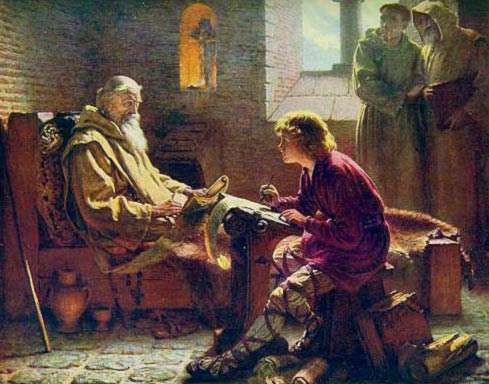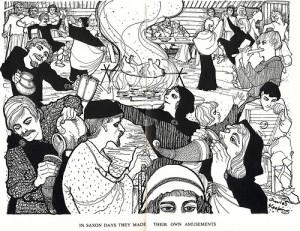As I write this blog a very loud party is going on downstairs as my daughter has a 16th Birthday party. As the aged parents we are in exile upstairs. That said it is a traditional party night as it is 12th night: the 12th and last night of Christmas. 12th Night was traditionally celebrated on the night of the 5th of January – the night BEFORE the 12th day.
This may seem odd to modern minds as we are used to a day starting at Midnight and so night follows day. To the ancient peoples (and right through medieval times) the day ended at sunset. The night that then followed belonged to the following day. Thus the night AFTER Christmas eve was the first night and also coincided with the pagan saxon Mother’s night. That night started the 12 days just as 12th night heralded its end.
12th Night was a time for partying. There was no particular celebration associated with 31st December as in Saxon times that was not the last day of the year. For a long time a new year started on Mother’s night (the 1st night of Yuletide which later became the first night of Christmas. ) and later a New Year actually started around 25th March which was the Spring Equinox date. The New year beginning on 25th March lasted until the 18th century. So 31st December was not a big night. 12th Night was.

“Twelfth Night Merry-Making in Farmer Shakeshaft’s Barn”, from Ainsworth’s Mervyn Clitheroe, by Phiz
In Saxon times a popular tradition is the custom of wassailing. This word comes from the Old English was hael, meaning to your health. Everyone at a Twelfth Night celebration would drink from a large wassail bowl, followed by a toast or a wassail to their health.
Another custom is the lighting of fires with all those attending circling the fire drinking to each other’s health and fortune.









